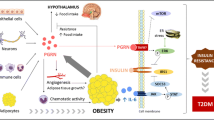Abstract
Background
A protein called “secreted protein acidic and rich in cysteine” (SPARC) may be important in the progression of diabetic nephropathy. Recent animal studies have shown a possible correlation between SPARC levels and diabetes-related kidney growth.
Methods
We measured serum levels of SPARC in patients with diabetic nephropathy and compared them to the severity of glomerular lesions as determined by renal biopsy. A total of 50 non-insulin-dependent diabetic patients were divided into 2 groups; patients with endstage diabetic nephropathy (ESDN, n=10) or without ESDN (DM, n=40). Renal biopsies were performed in all patients without ESDN. Serum levels of SPARC were measured by enzyme-linked immunosorbent assay (ELISA) in the 50 patients with diabetes, in 10 healthy controls, and in 10 patients with immunoglobulin (Ig) A nephropathy. Values for serum creatinine, creatinine clearance, β2-microglobulin, and hemoglobin A1C also were obtained.
Results
The mean serum SPARC levels (ng/mL) were 29±12, 41±21, 43±20, and 85±28, for healthy controls, IgA nephropathy, DM, and ESDN patients, respectively. Serum SPARC levels showed a significant increase with an increase in severity of glomerular diffuse lesions. Serum levels of SPARC were significantly higher in the DM group than in controls, and significantly higher in the ESDN group than in the control, IgA nephropathy and DM groups.
Conclusion
The findings suggest that SPARC may contribute to the progression of diabetic nephropathy.
Similar content being viewed by others
References
Sage EG, Bornstein P. Extracellular proteins that modulate cell-matrix interaction. SPARC, tenascin and thrombospondin. J Biol Chem 1991;266:14831–14834.
Tremble PM, Lane TF, Sage EH, Werb Z. SPARC, a secreted protein associated with morphogenesis and tissue remodelling, induces expression of metalloproteinases in fibroblasts through a novel extracellular matrix-dependent pathway. J Cell Biol 1993;121:1433–1444
Lane TF, Sage EH. The biology of SPARC, a protein that modulates cell-matrix interaction. FASEB J 1994; 8:163–173.
Pichler RH, Bassuk JA, Hugo C, Reed MJ, Eng E, Gordon KL, Pippin J, Alpers CE, Couser WG, Sage EH, Johnson RJ. SPARC is expressed by mesangial cells in experimental mesangial proliferative nephritis and inhibits platelet-derived growth factor mediated mesangial cell proliferation in vitro. Am J Pathol 1996;148:1153–1167.
Lane TF, Iruela-Arispe ML, Sage EH. Regulation of gene expression by SPARC during angiogenesis in vitro. J Biol Chem 1992;267:16736–16745.
Kamihagi K, Katayama M, Ouchi R, Kato I. Osteonectin/SPARC regulates cellular secretion rates of fibronectin and laminin extracellular matrix proteins. Biochem Biophys Res Commun 1994;200:423–428.
Gilbert RE, McNally PG, Cox A, Dziadek M, Rumble J, Cooper ME, Jerums G. SPARC gene expression is reduced in early diabetes-related kidney growth. Kidney Int 1995;48:1216–1225.
Gellman DD, Pirani CL, Soothill JF, Muehrcke RC, Kark RM. Diabetic nephropathy: a clinical and pathologic study based on renal biopsies. Medicine 1959;38:312–367.
Termine JD, Kleinman HK, Whitson SW, Conn KM, McGarvey ML, Martin GR. Osteonectine, a bone specific protein binding mineral to collagen. Cell 1981;26:99–105.
Dziadek M, Paulsson M, Aumailley M, Timpl R. Purification and tissue distribution of a small protein extracted from basement membrane tumor. Eur J Biochem 1986;161:455–464.
Pichler RH, Hugo C, Shankland SJ, Reed MJ, Bassuk JA, Andoh TF, Lombardi DM, Schwartz SM, Bennett WM, Alpers CE, Sage EH, Johnson RJ, Couser WG. SPARC is expressed in renal interstitial fibrosis and in renal vascular injury. Kidney Int 1996;50:1978–1989.
Davies M, Martin J, Thomas GJ, Lovett DH. Proteinases and glomerular matrix turnover. Kidney Int 1992;41:671–678.
Nakamura T, Fukui M, Ebihara I, Osada S, Tomino Y, Koide H. Abnormal gene expression of matrix metallo-proteinases and their inhibitor in glomeruli from diabetic rats. Renal Physiol Biochem 1994;17:316–325.
Studer RK, Craven PA, DeRubertis FR. Role for protein kinase C in the mediation of increased fibronectin accumulation by mesangial cells grown in high glucose medium. Diabetes 1993;42:118–126.
Floege J, Alpers CE, Sage EH, Pritzl P, Gordon K, Johnson RJ, Couser WG. Markers of complement-dependent and complement-independent glomerular visceral epithelial cell injury in vivo. Lab Invest 1992;67:486–497.
Author information
Authors and Affiliations
About this article
Cite this article
Kanauchi, M., Nishioka, H., Kawano, T. et al. Role of secreted protein acidic and rich in cysteine (SPARC) in patients with diabetic nephropathy. Clin Exper Neph 1, 115–120 (1997). https://doi.org/10.1007/BF02479910
Received:
Revised:
Accepted:
Issue Date:
DOI: https://doi.org/10.1007/BF02479910




